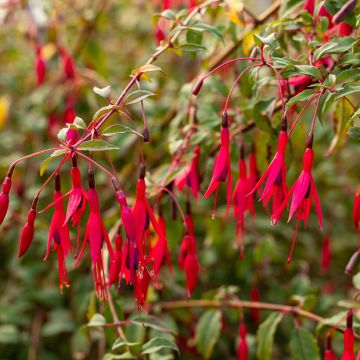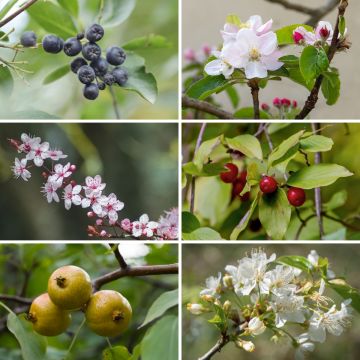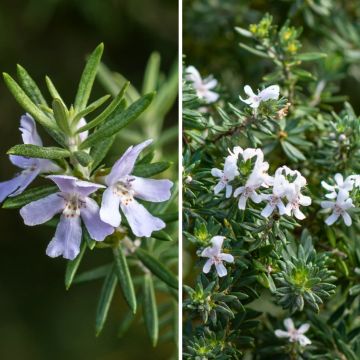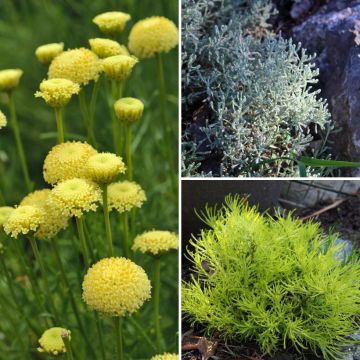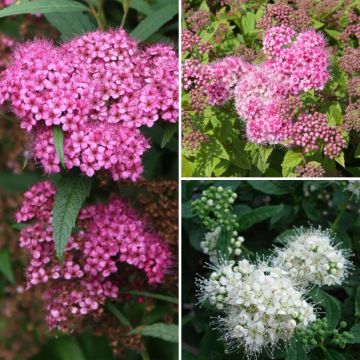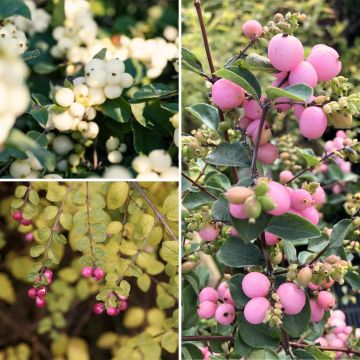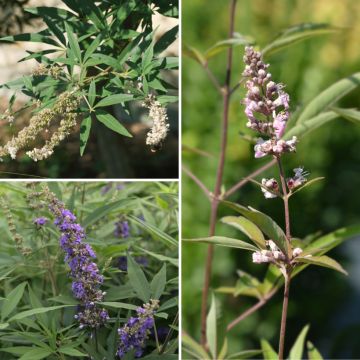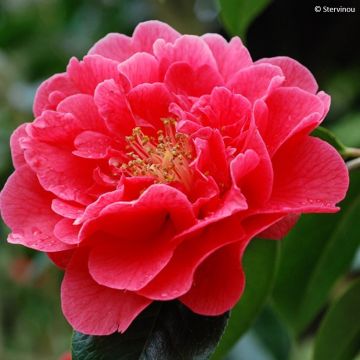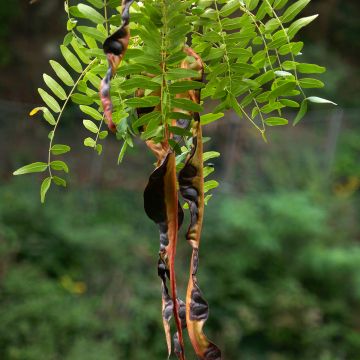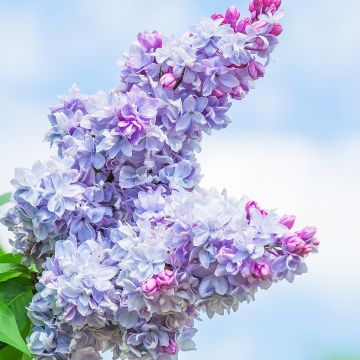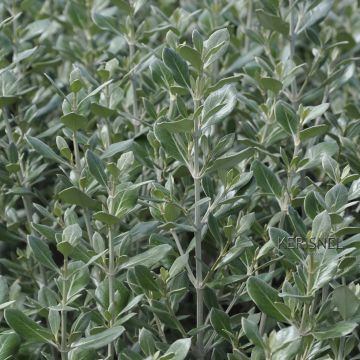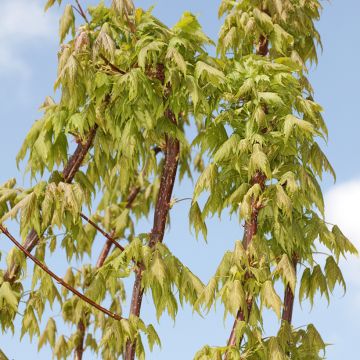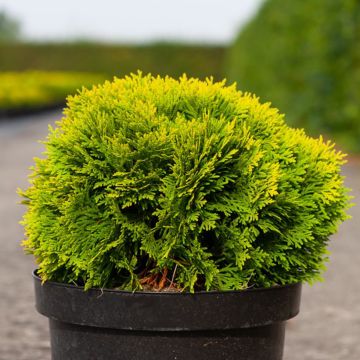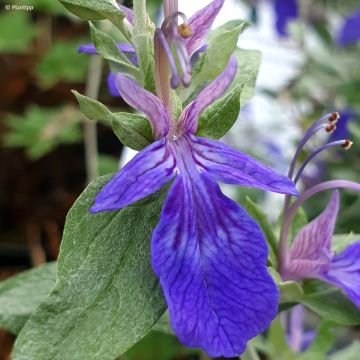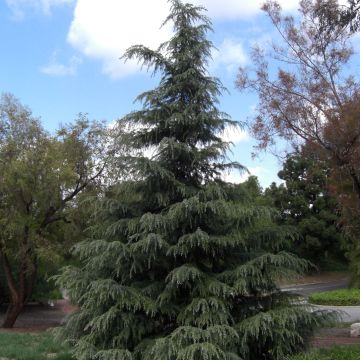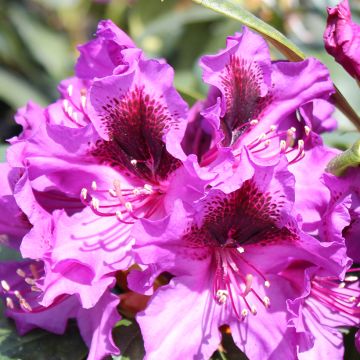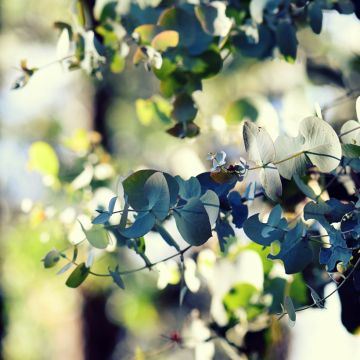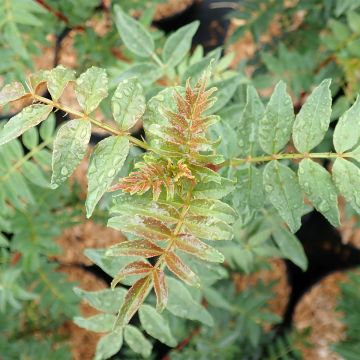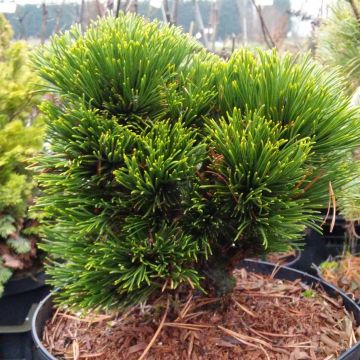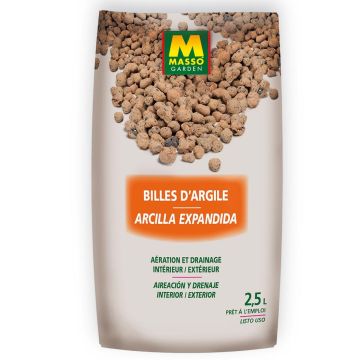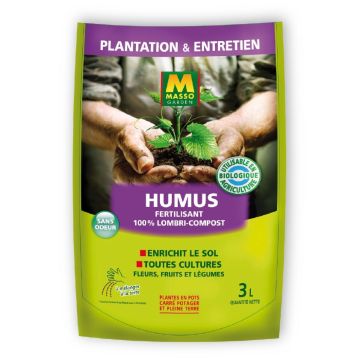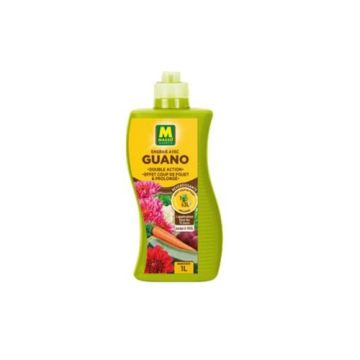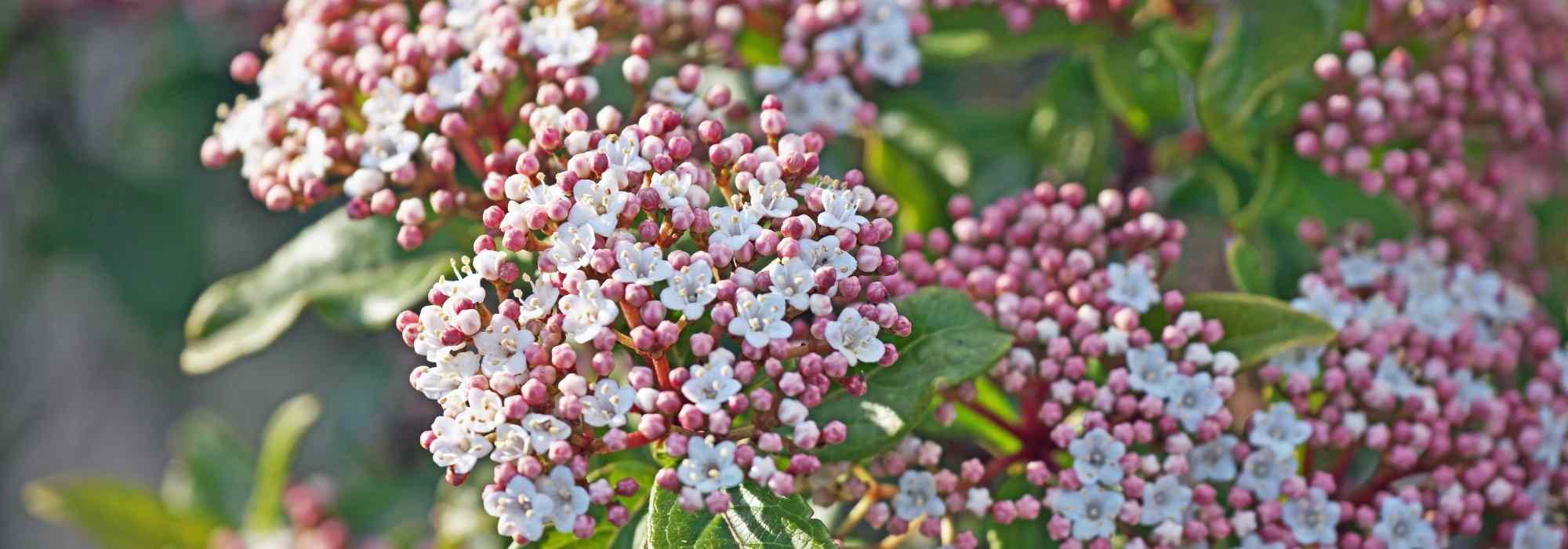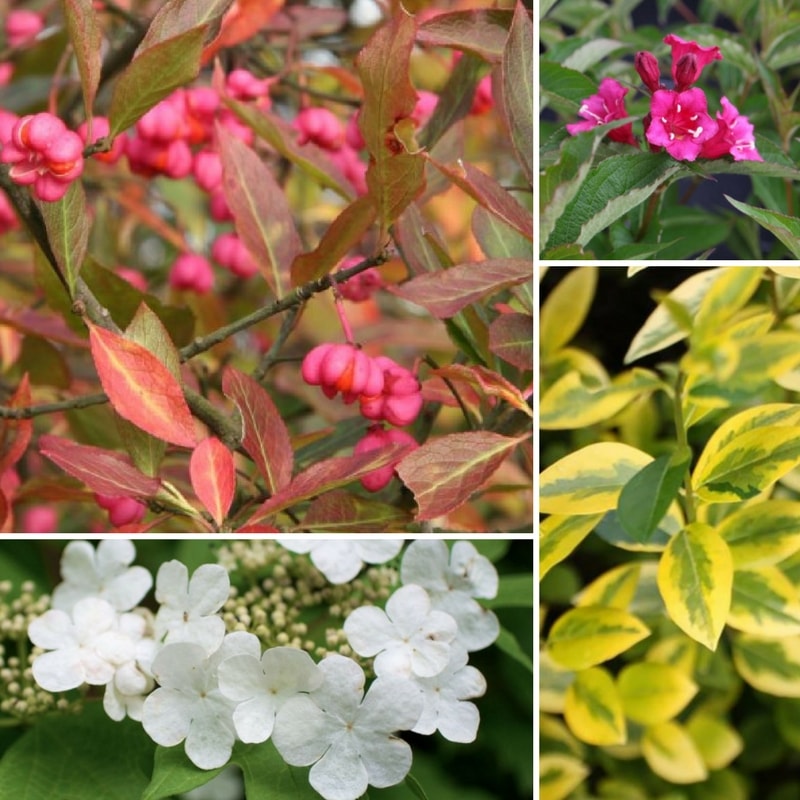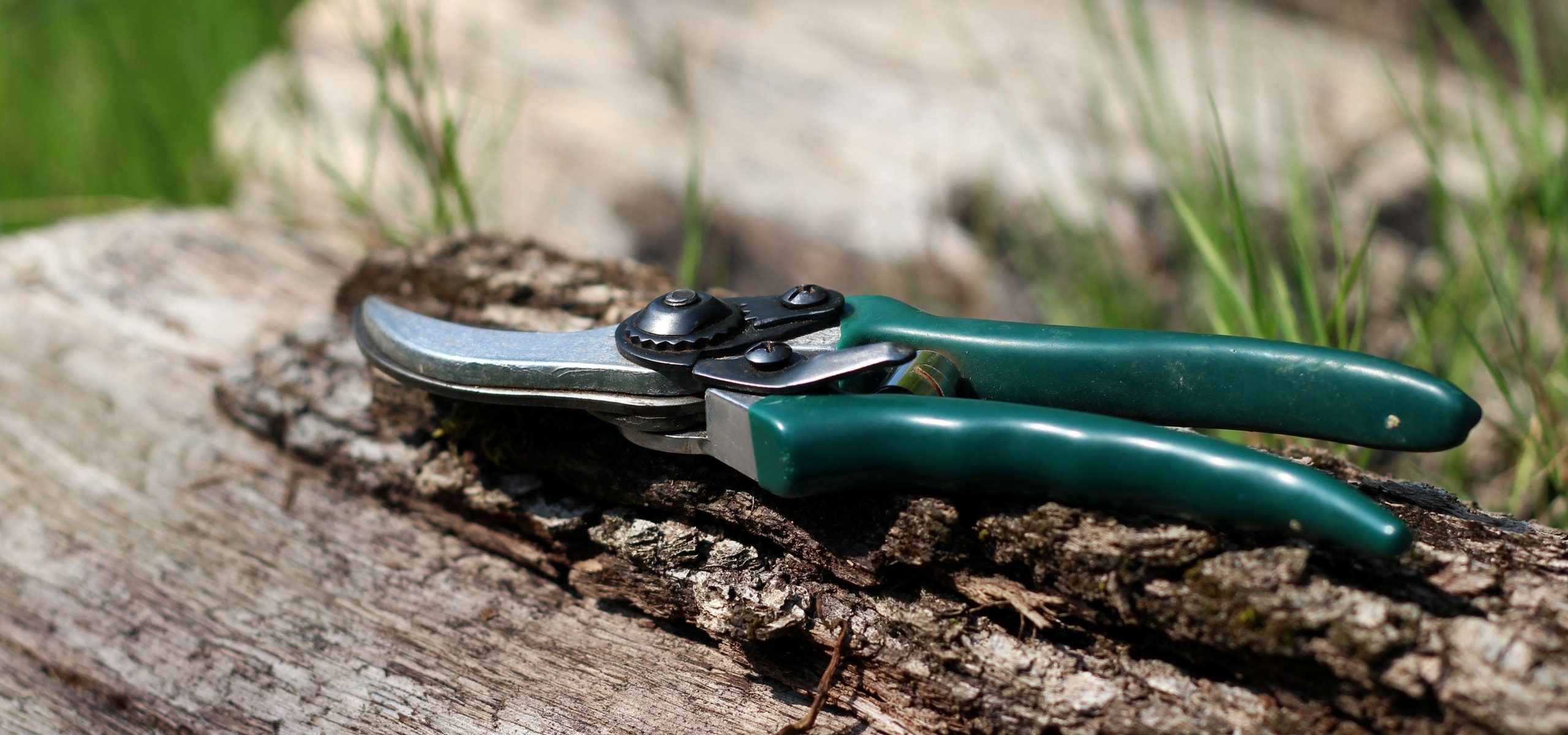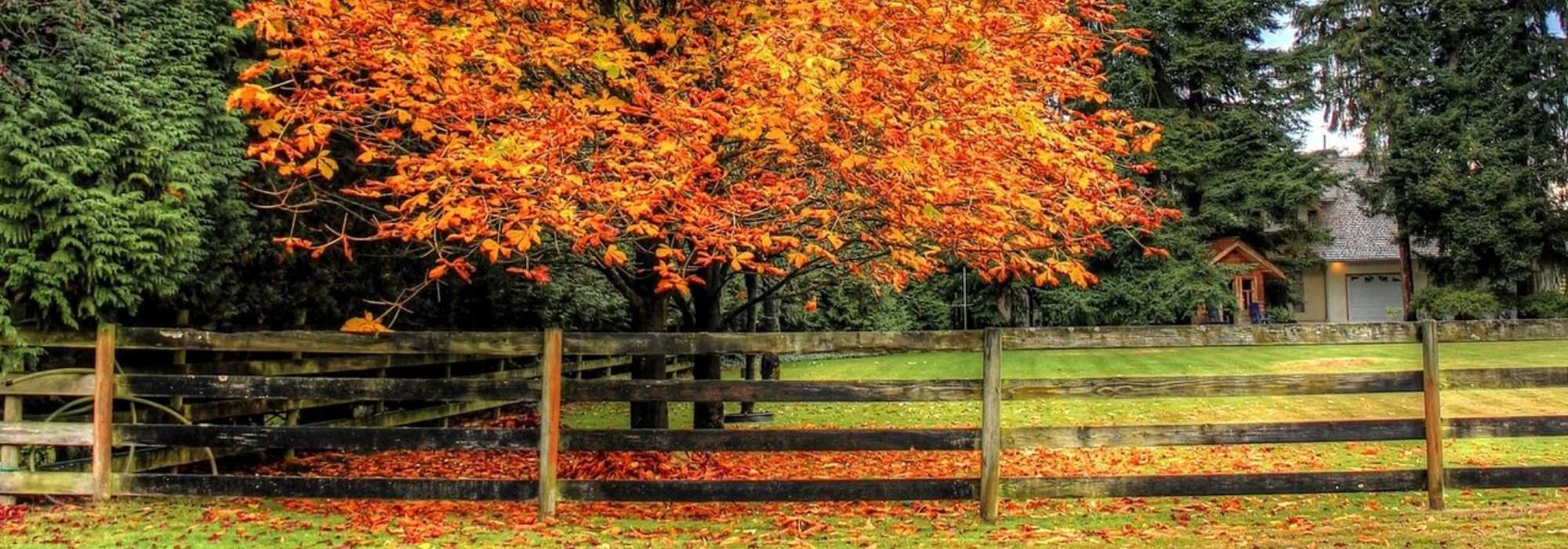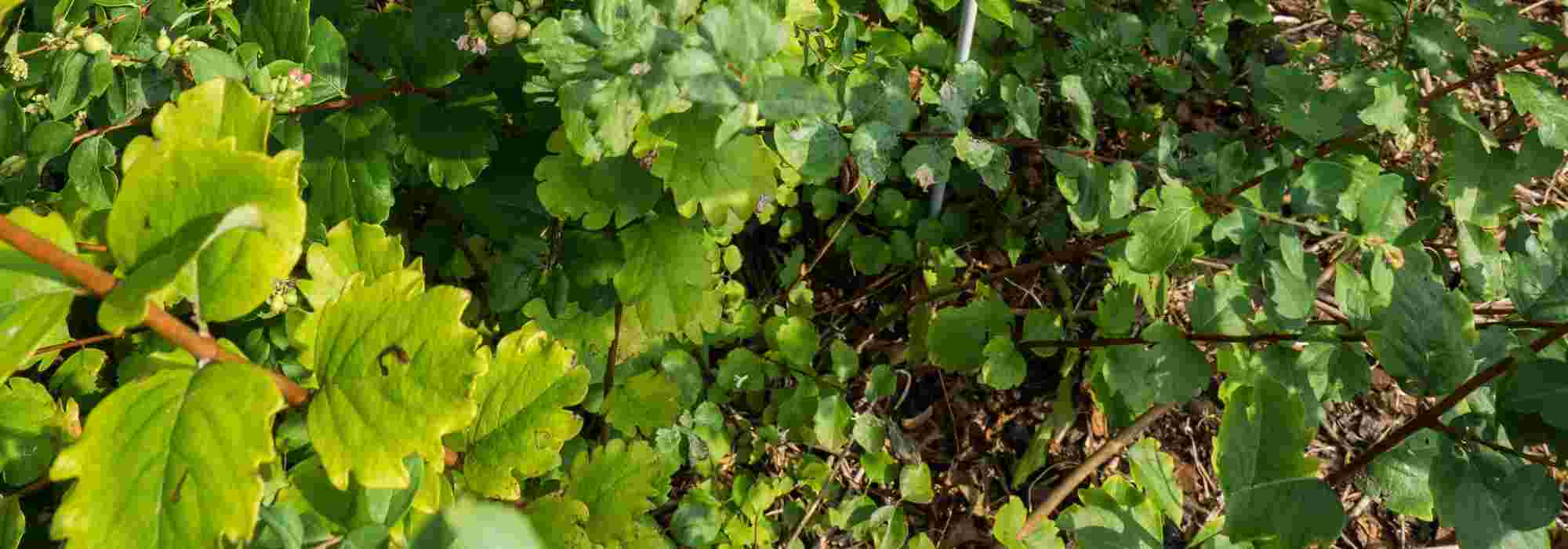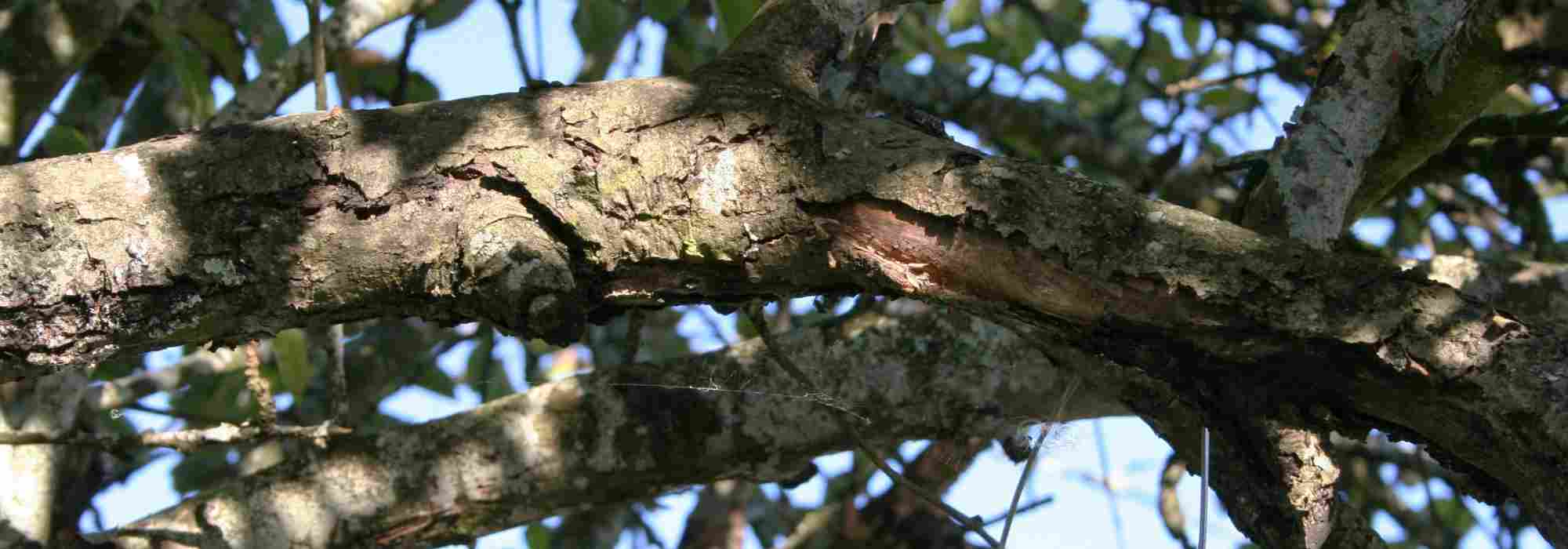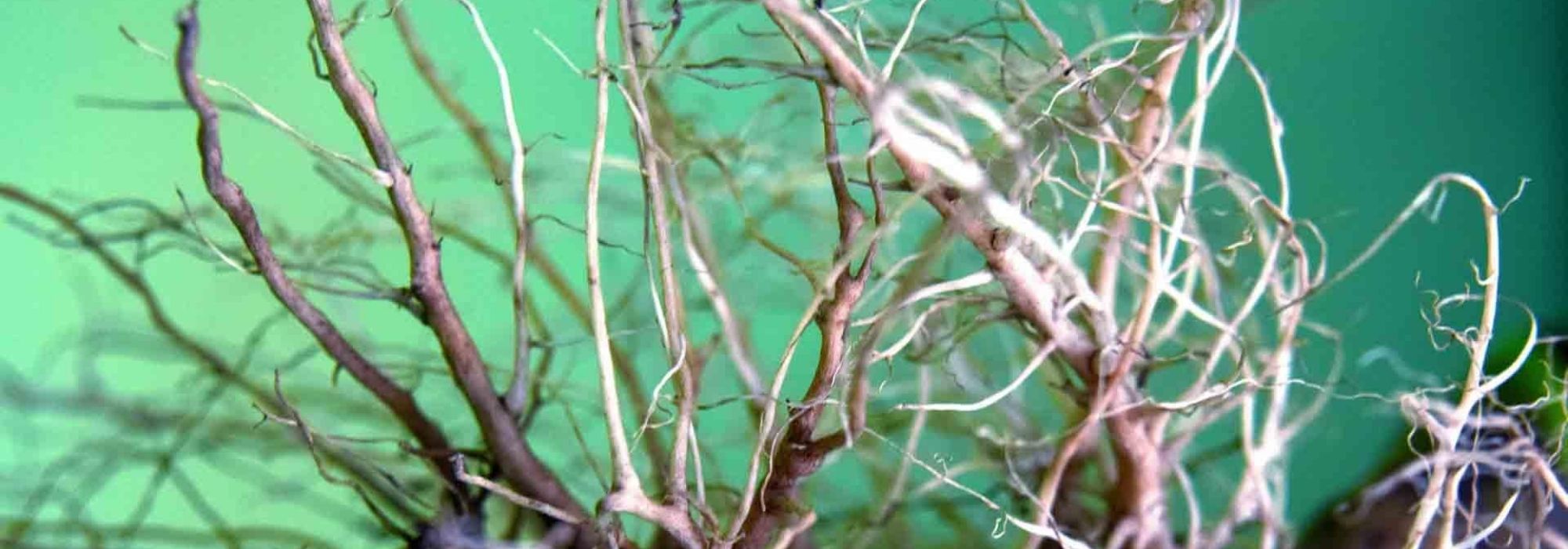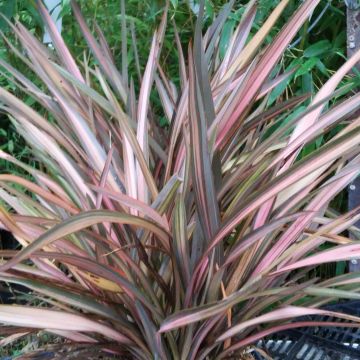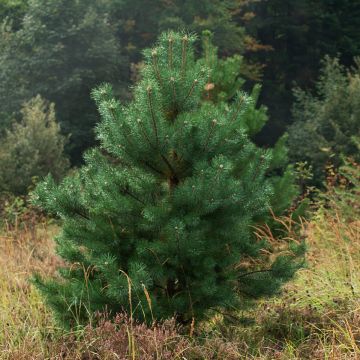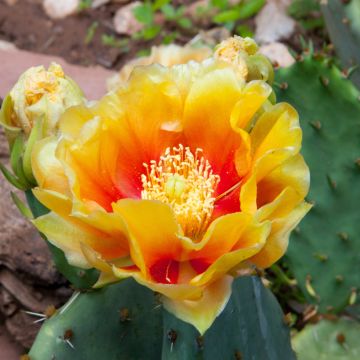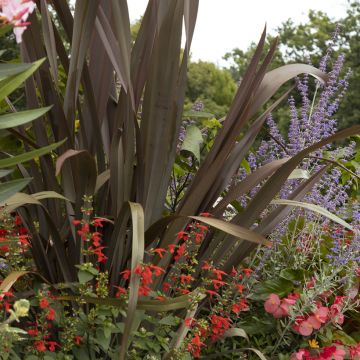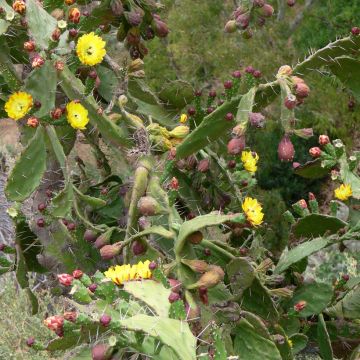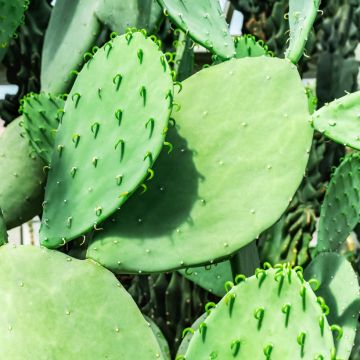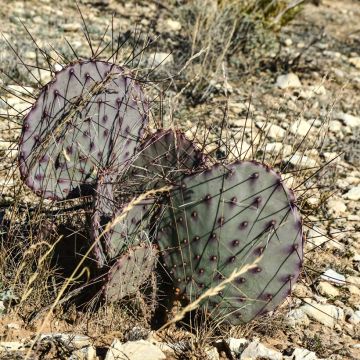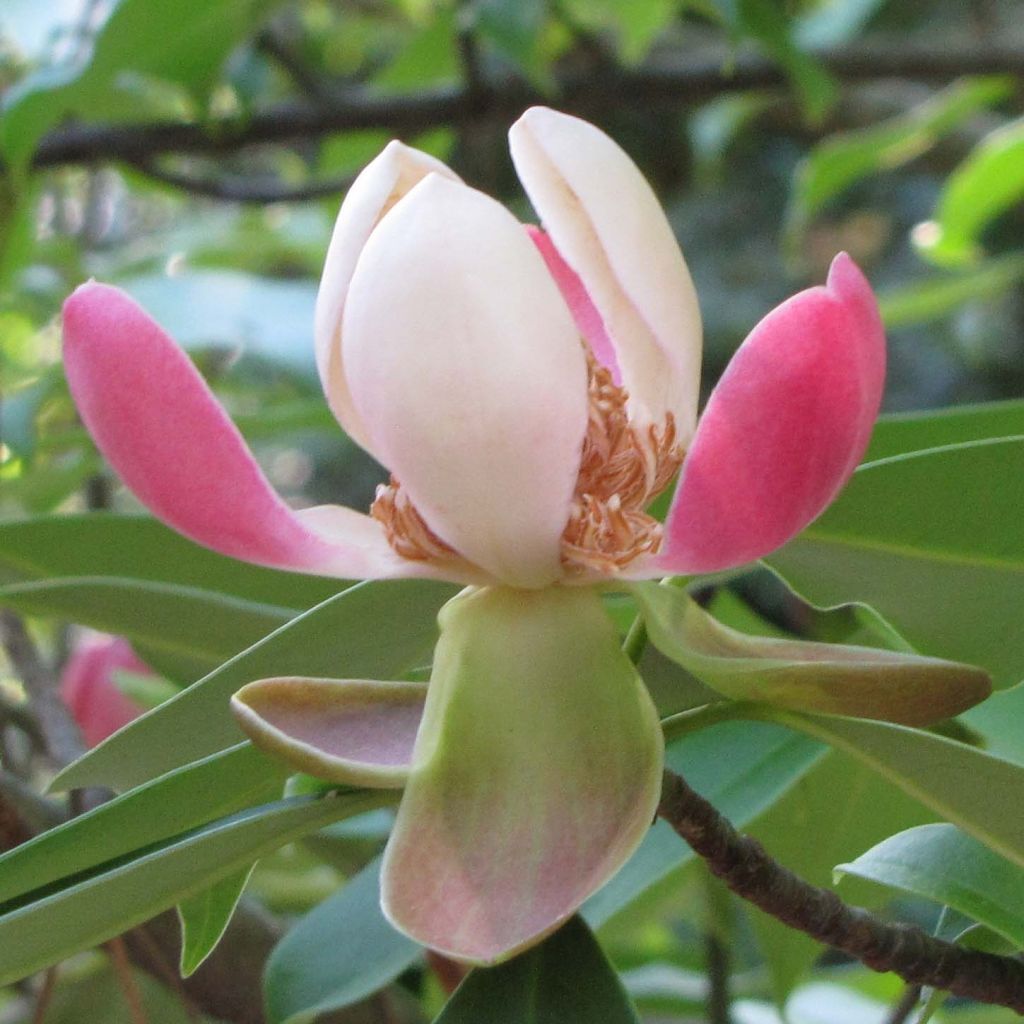

Manglietia insignis
Manglietia insignis
Magnolia insignis
Magnolia
Very beautiful photos of the red flower shape on all the websites. Results: 3 different origins, white flowers.
Louis-Xavier, 15/10/2019
Special offer!
Receive a €20 voucher for any order over €90 (excluding delivery costs, credit notes, and plastic-free options)!
1- Add your favorite plants to your cart.
2- Once you have reached €90, confirm your order (you can even choose the delivery date!).
3- As soon as your order is shipped, you will receive an email containing your voucher code, valid for 3 months (90 days).
Your voucher is unique and can only be used once, for any order with a minimum value of €20, excluding delivery costs.
Can be combined with other current offers, non-divisible and non-refundable.
Why not try an alternative variety in stock?
View all →This plant carries a 24 months recovery warranty
More information
We guarantee the quality of our plants for a full growing cycle, and will replace at our expense any plant that fails to recover under normal climatic and planting conditions.
Does this plant fit my garden?
Set up your Plantfit profile →
Description
Manglietia insignis, also known as Magnolia insignis, is a small tree native to the mild regions of the Himalayas, still rarely available for sale. With an elegant habit, it bears large and beautiful evergreen leaves of a bright green colour and boasts a long spring flowering in the form of beautiful cups vividly coloured in carmine pink and cream, reminiscent of those of its relative, the magnolia. With an almost tropical appearance and temperament, it can be grown in containers in colder regions and stored in a cold greenhouse during winter. In milder climates, it can be planted in the ground. It is a unique plant, of great elegance, and is no more demanding than its cousin the magnolia.
Manglietia insignis, charmingly called 'Red Lotus Tree', belongs to the Magnoliaceae family. It is native to certain regions of the Himalayas, western China, and northern Vietnam. It is an evergreen bush with an initially upright and conical habit in its youth, becoming widely pyramidal with age. Its foliage is dense, and the branches almost black, with several trunks and numerous ramifications. Depending on growing conditions, it will reach a height of 5 to 8m (16 to 26ft) with a width of 3 to 5m (10 to 16ft) in our climates. Its growth is slow, reaching maturity in 10 years in the best cases. The slightly fragrant flowering occurs from March-April to June. Bursting with green buds, they unfold into open cups measuring 8cm (3in) in diameter and 12cm (5in) in length, consisting of 9 to 12 waxy petals in pure colours, ranging from purplish pink to almost red with a white-cream base. They display a bouquet of cream-pink stamens surrounding a granular green pistil in their centre. After pollination, violet fruits measuring 5 to 10cm (2 to 4in) long sometimes form. The semi-persistent to evergreen foliage is leathery, with a glossy green finish, composed of large entire and ovate leaves, 10 to 20cm (4 to 8in) long, with a lighter velvety underside. The young leaves are coppery and pubescent. The hardiness of this magnolia is still to be determined, but it seems to be around -10°C (14°F) for adult specimens.
Plant Manglietia insignis to highlight its beauty: as a standalone specimen, near a pathway to enjoy its exotic flowering, or in a large container on a terrace for winter storage. In mild climates and in cool, porous, non-calcareous soil, it will work wonders as a standalone plant on a lawn, but also mixed in a flower bed or in an informal hedge with viburnum (Viburnum odoratissimum), Japanese privet (Ligustrum japonicum), or other shrubs that won't overshadow its beauty. In an exotic flower bed, it can accompany, for example, a giant canna (Canna musafolia), an aralia, hedychium, or an imperial dahlia.
Report an error about the product description
Manglietia insignis in pictures
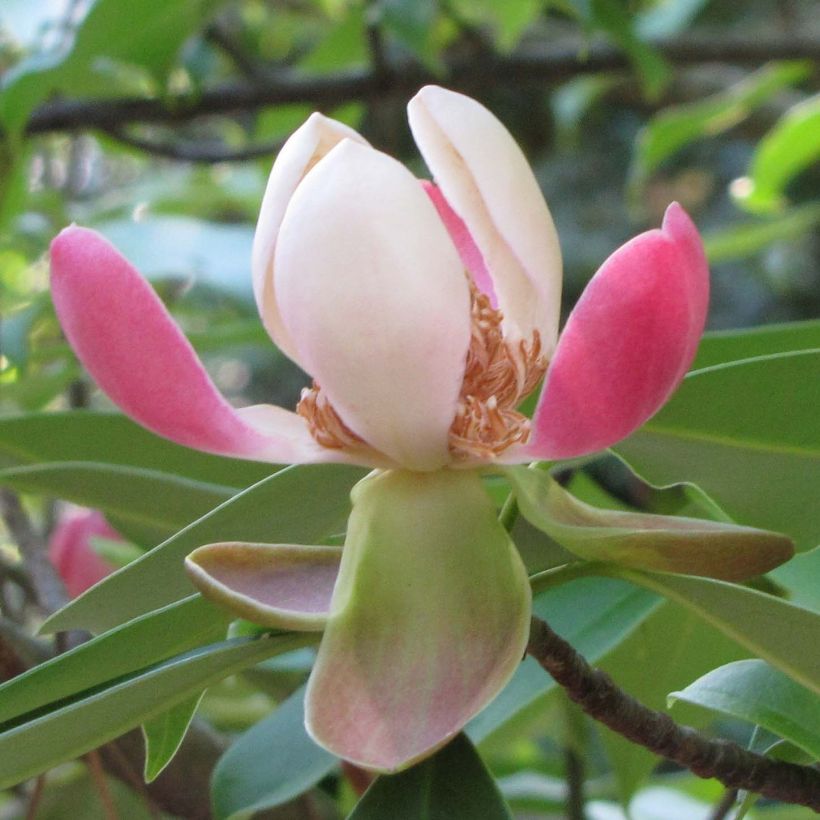

Plant habit
Flowering
Foliage
Botanical data
Magnolia
insignis
Magnoliaceae
Magnolia
Himalayas
Other Shrubs A to Z
View all →Planting and care
Magnolia insignis prefers humiferous, sandy, acidic, rich in organic matter, moist soil without stagnant humidity. It appreciates gently sunny to semi-shaded exposures, and dreads scorching exposures that fade the colour of the flowers and make them wilt faster. Its cultivation is possible in open ground in regions with a mild climate, as its hardiness does not exceed -10°C (14°F) even if planted in a very sheltered location. This bush does not tolerate transplantation well once it is established, so choose its location carefully. When grown in a large container, its growth is limited. Water in summer, less so in winter. In a cold greenhouse or conservatory, watering (without excessive limestone) should be spaced out, and only when the substrate is dry on the surface up to 1cm (1in). In late winter, before the resumption of vegetation, remove dead wood and intertwined branches to keep only the vigorous branches and maintain a beautiful habit.
Some diseases such as coral or rot can be feared when the growing conditions are not appropriate (e.g., soil too wet or poorly drained). Scale insects can also develop on this small tree.
Planting period
Intended location
Care
Planting & care advice
-
, onOrder confirmed
Reply from on Promesse de fleurs
Similar products
Haven't found what you were looking for?
Hardiness is the lowest winter temperature a plant can endure without suffering serious damage or even dying. However, hardiness is affected by location (a sheltered area, such as a patio), protection (winter cover) and soil type (hardiness is improved by well-drained soil).

Photo Sharing Terms & Conditions
In order to encourage gardeners to interact and share their experiences, Promesse de fleurs offers various media enabling content to be uploaded onto its Site - in particular via the ‘Photo sharing’ module.
The User agrees to refrain from:
- Posting any content that is illegal, prejudicial, insulting, racist, inciteful to hatred, revisionist, contrary to public decency, that infringes on privacy or on the privacy rights of third parties, in particular the publicity rights of persons and goods, intellectual property rights, or the right to privacy.
- Submitting content on behalf of a third party;
- Impersonate the identity of a third party and/or publish any personal information about a third party;
In general, the User undertakes to refrain from any unethical behaviour.
All Content (in particular text, comments, files, images, photos, videos, creative works, etc.), which may be subject to property or intellectual property rights, image or other private rights, shall remain the property of the User, subject to the limited rights granted by the terms of the licence granted by Promesse de fleurs as stated below. Users are at liberty to publish or not to publish such Content on the Site, notably via the ‘Photo Sharing’ facility, and accept that this Content shall be made public and freely accessible, notably on the Internet.
Users further acknowledge, undertake to have ,and guarantee that they hold all necessary rights and permissions to publish such material on the Site, in particular with regard to the legislation in force pertaining to any privacy, property, intellectual property, image, or contractual rights, or rights of any other nature. By publishing such Content on the Site, Users acknowledge accepting full liability as publishers of the Content within the meaning of the law, and grant Promesse de fleurs, free of charge, an inclusive, worldwide licence for the said Content for the entire duration of its publication, including all reproduction, representation, up/downloading, displaying, performing, transmission, and storage rights.
Users also grant permission for their name to be linked to the Content and accept that this link may not always be made available.
By engaging in posting material, Users consent to their Content becoming automatically accessible on the Internet, in particular on other sites and/or blogs and/or web pages of the Promesse de fleurs site, including in particular social pages and the Promesse de fleurs catalogue.
Users may secure the removal of entrusted content free of charge by issuing a simple request via our contact form.
The flowering period indicated on our website applies to countries and regions located in USDA zone 8 (France, the United Kingdom, Ireland, the Netherlands, etc.)
It will vary according to where you live:
- In zones 9 to 10 (Italy, Spain, Greece, etc.), flowering will occur about 2 to 4 weeks earlier.
- In zones 6 to 7 (Germany, Poland, Slovenia, and lower mountainous regions), flowering will be delayed by 2 to 3 weeks.
- In zone 5 (Central Europe, Scandinavia), blooming will be delayed by 3 to 5 weeks.
In temperate climates, pruning of spring-flowering shrubs (forsythia, spireas, etc.) should be done just after flowering.
Pruning of summer-flowering shrubs (Indian Lilac, Perovskia, etc.) can be done in winter or spring.
In cold regions as well as with frost-sensitive plants, avoid pruning too early when severe frosts may still occur.
The planting period indicated on our website applies to countries and regions located in USDA zone 8 (France, United Kingdom, Ireland, Netherlands).
It will vary according to where you live:
- In Mediterranean zones (Marseille, Madrid, Milan, etc.), autumn and winter are the best planting periods.
- In continental zones (Strasbourg, Munich, Vienna, etc.), delay planting by 2 to 3 weeks in spring and bring it forward by 2 to 4 weeks in autumn.
- In mountainous regions (the Alps, Pyrenees, Carpathians, etc.), it is best to plant in late spring (May-June) or late summer (August-September).
The harvesting period indicated on our website applies to countries and regions in USDA zone 8 (France, England, Ireland, the Netherlands).
In colder areas (Scandinavia, Poland, Austria...) fruit and vegetable harvests are likely to be delayed by 3-4 weeks.
In warmer areas (Italy, Spain, Greece, etc.), harvesting will probably take place earlier, depending on weather conditions.
The sowing periods indicated on our website apply to countries and regions within USDA Zone 8 (France, UK, Ireland, Netherlands).
In colder areas (Scandinavia, Poland, Austria...), delay any outdoor sowing by 3-4 weeks, or sow under glass.
In warmer climes (Italy, Spain, Greece, etc.), bring outdoor sowing forward by a few weeks.






























